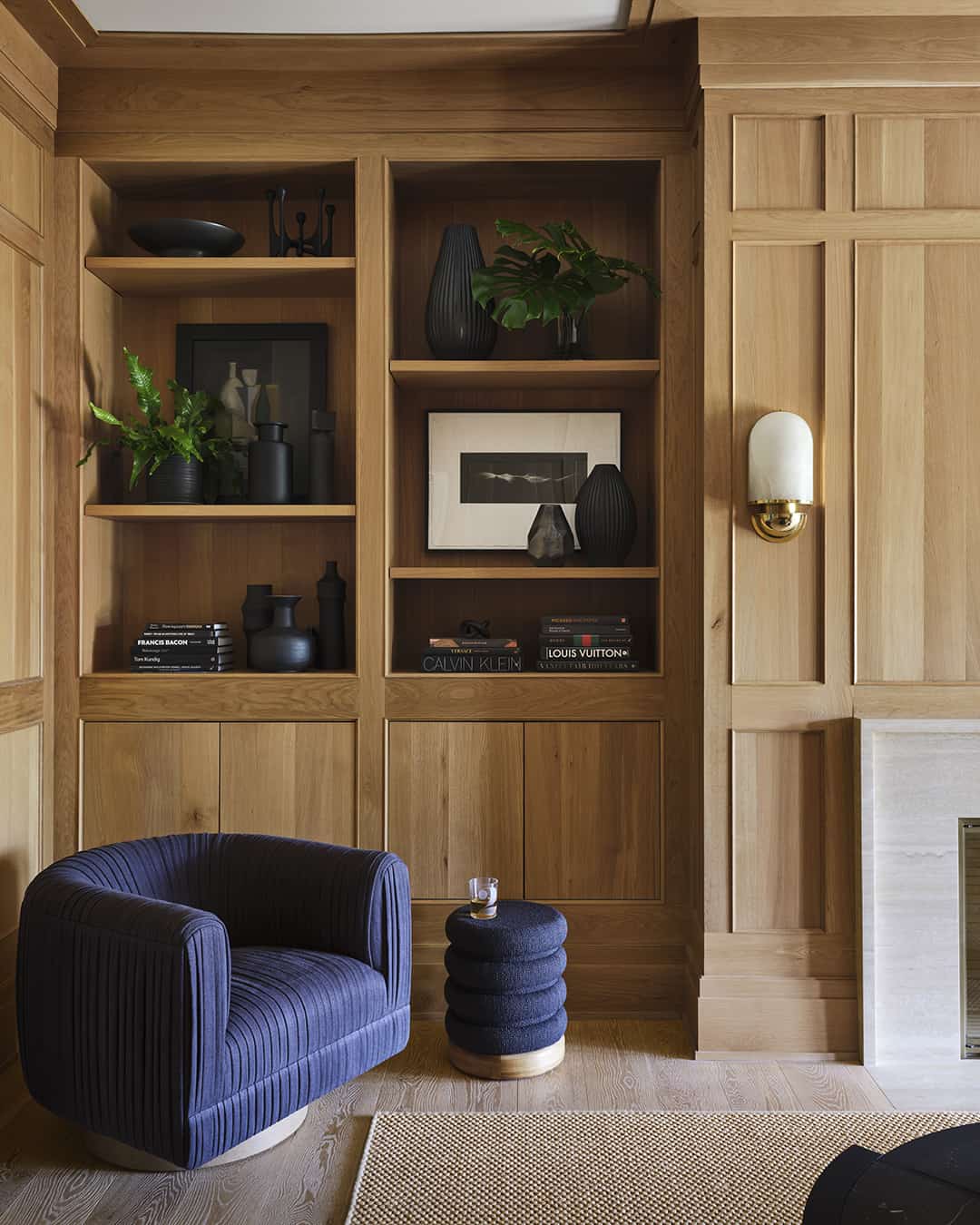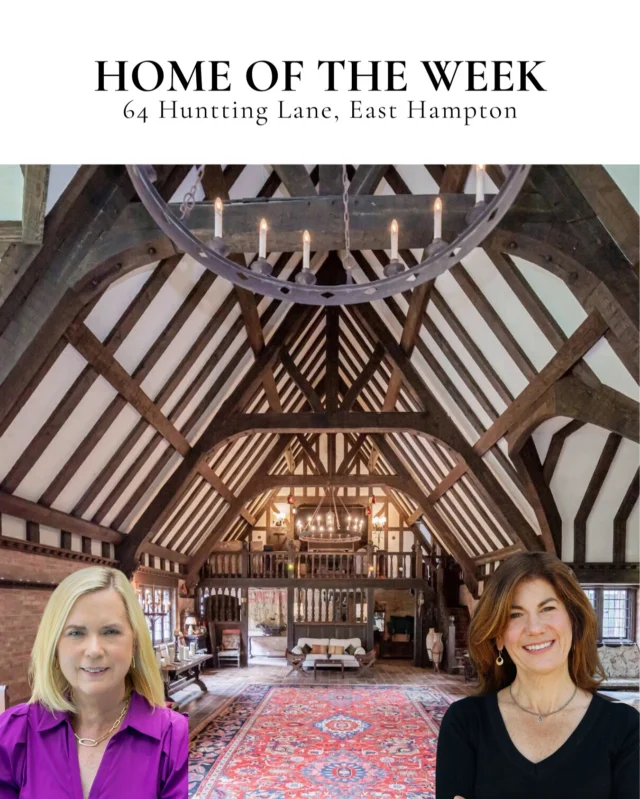Timothy Godbold transforms a new-build in Water Mill into a home with a thoroughly modern point of view.

There’s nothing more unexciting than going into a house that looks like every other house,” says Timothy Godbold, an interior designer with a sideline saving modernist houses in the Hamptons from the wrecking ball. (He is the founder of the organization Hamptons 20 Century Modern.) Beach house clichés — “white rooms accented with bits of driftwood, Chinese ceramic objets, and a lot of bouclé throws,” — aren’t his bag. Another design bugaboo: “Houses in which you have to tiptoe about because the owner is watching, terrified that you will put your drink down in the wrong place.” Godbold has an aversion to anything that smacks of preciousness. He seeks to create interiors that are casual yet distinct — sophisticated spaces you would never mistake for the work of anyone else.
When the owners of a 12,000-square-foot Water Mill house that had been done up to resemble an English country home retained Godbold to redecorate their sprawling estate, his first move, he says, was “to throw out the rule book.” He explains, “It’s fine if someone comes to me with a fixed idea of how they want their house to look, but it helps if they’re also open to trying new things.”
That was certainly true of his Water Mill clients, a married couple with young children. Neither of them cared for the existing décor, which they had acquired along with the property, and they were receptive to taking a fresh approach. However, the husband favored interiors that were traditional in style and the wife wanted a modern look. The challenge for Godbold, whose motto is, “It must be livable and durable,” was to create spaces in which all the family members felt at ease.


“I always start with lighting,” says Godbold. “All the rooms have unusual pieces.” In the den, it’s a chandelier that gives off what he calls a ‘SoHo House vibe’ — “English, rock n’ roll, the kind of piece that makes you feel you’re in the countryside with David and Victoria Beckham.”
In the foyer, a fixture that’s a modern update on a traditional lantern sets the tone for the rest of the house. An alabaster pendant by Atelier Alain Ellouz — Ellouz has been called “a goldsmith of light” — serves as a focal point in the living room.
Other striking pieces include a wall relief by the New York-based artist Malcolm Hill in the living room above the fireplace. “Anything three-dimensional brings an extra element to the room,” says Godbold. “What’s cool about Malcolm is the way he incorporates textural things he finds on the street into his work.” Hill’s piece for the Water Mill house features nautical rope, which ties in nicely with Godbold’s color palette of sea foams and mints and dark blues.


“I love all those abstract, Brutalist type wall reliefs from the Fifties and Sixties,” he adds, which is not surprising, given his passion for modernist art and architecture. While to some his preservation mission might seem like a lost cause, Godbold remains optimistic. “I don’t think it’s a losing battle, not yet. I look at Palm Springs, where real estate agents make money selling houses that people want, and I see a success story.”
Closer to home, modernist houses might be among the last great values in real estate in the Hamptons. “For young people who aren’t Wall Street brokers,” he says, “buying a modern house and restoring it rather than tearing it down is a chance to own a property with a pedigree for a good opening price.”
And if a house doesn’t have a pedigree, by the time Godbold is done with it, you would think it had one. Consider the den of the Water Mill house. Boldly, he upholstered all the furniture in the oak-panelled room in black linen — an inspired idea that lends a settled quality to the room. The effect is at once dramatic and beautiful in a quiet way.
“I put the idea of doing everything in the den in black to the wife, and she was like, ‘Great! Let’s do it!’” he recalls. When the husband got wind of this plan, “he was like, ‘Oh my God, oh my God, oh my God.’” But when he saw the result, he, too, was won over. “Black upholstery and oak tell a pretty story. People walk in and just say, ‘Wow! A whole room in black!’ They’ve never seen anything like it. And that is part of the appeal.”














![Christine Mack’s passion for art goes far beyond collecting. Through her foundation and new exhibition at the Southampton Arts Center, she’s spotlighting the voices shaping the future of contemporary art. With a sharp eye, intuitive taste, and deep dedication to emerging artists, Mack is redefining what it means to collect with purpose. [link in bio]](https://hamptonsrealestateshowcase.com/wp-content/uploads/sb-instagram-feed-images/542905246_18531825304030135_6954522886737247427_nfull.webp)
![Interior designer @nealbeckstedt brings his philosophy of slow design to this Sag Harbor cottage, originally a 19th-century workers’ dormitory. From reusing century-old beams to curating one-of-a-kind finds, every detail was chosen with intention to create a space that feels warm, timeless, and deeply personal. [link in bio]](https://hamptonsrealestateshowcase.com/wp-content/uploads/sb-instagram-feed-images/543661138_18531659152030135_7156920984645144201_nfull.webp)





